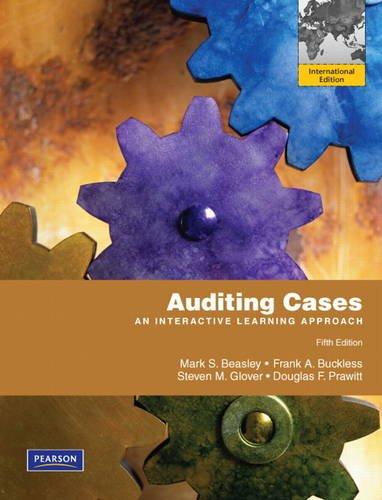Question
1) For surplus spending units (SSUs): Select one: A. Savings exceed internal investment requirements. B. Investment needs exceed savings. C. There are no investments necessary.
1) For surplus spending units (SSUs):
Select one:
A. Savings exceed internal investment requirements.
B. Investment needs exceed savings.
C. There are no investments necessary.
D. Savings are non-existent.
2) Assume that General Motors Corporation obtains a loan from Comerica Bank. Which of the following is true?
Select one:
A. GM has issued primary claims against itself directly to bank depositors.
B. GM has received investment funds directly from bank depositors.
C. GM has borrowed funds through a financial intermediary.
D. GM has used direct financing in the primary markets to obtain funds.
3) Advantages of financial intermediation include:
Select one:
A. Lower risk, since investors have a claim against a professional lending institution instead of a specific DSU.
B. Reduced search costs, since it's cheaper for depositors to allow financial intermediaries to find prospective borrowers.
C. Enhanced liquidity, since depositors can withdraw money on demand from financial intermediaries.
D. All of the above.
4) Which of the following financial intermediaries is/are able to create new checkable deposits when making loans to borrowers?
Select one:
A. Commercial banks
B. Insurance companies
C. Mutual fund companies
D. All of the above
5) Which of the following is true concerning fractional reserve banking in the U.S.?
Select one:
A. Only a portion of total credit outstanding is actually secured by money on deposit.
B. Depositors cannot have access to their money
C. Banks cannot loan more funds to borrowers than they actually have on deposit.
D. Fractional reserve banking will probably be replaced by full reserve banking in the near future.
6) Non-depository intermediaries typically include
Select one:
a. commercial banks and credit unions.
b. pension funds and life insurance companies.
c. savings and loans
d. all of these
7) Which of the following is true regarding checkable deposits in the U.S. payments mechanism?
I. Checkable deposits always involve a financial intermediary, a payer, and a payee.
II. Checkable deposits can be transferred by written checks or by electronic funds transfers.
III. Checkable deposits usually don't involve the Federal Reserve in the payments mechanism.
Select one:
a. I only
b. I and II only
c. I and III only
d. I, II, and III
8) Which of the following would be considered a DSU?
Select one:
a. A net borrower of funds.
b. A net lender of funds.
c. A net saver.
d. None of the above.
Step by Step Solution
There are 3 Steps involved in it
Step: 1

Get Instant Access to Expert-Tailored Solutions
See step-by-step solutions with expert insights and AI powered tools for academic success
Step: 2

Step: 3

Ace Your Homework with AI
Get the answers you need in no time with our AI-driven, step-by-step assistance
Get Started


